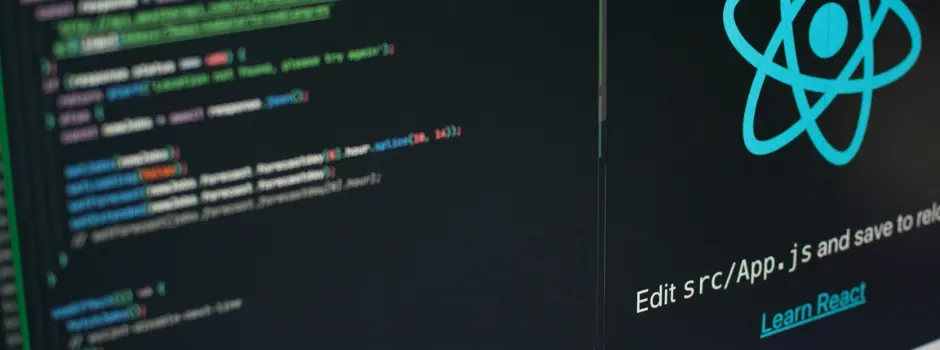![Top SQL Interview Questions With Answers [2025] 1 Post thumbnail](https://www.guvi.in/blog/wp-content/uploads/2021/03/Untitled-design-2-1170x480.png)
Top SQL Interview Questions With Answers [2025]
Dec 20, 2024 5 Min Read 11188 Views
(Last Updated)
The relational database MySQL remains one of the most extensively used Database Management systems over the years. A database is a collection of data in layman’s terms: structured, organized, and stored in digital form to ensure easy retrieval, access, management, and manipulation of business data.
While SQL(Structured Query Language) is a type of query language, adopted by different RDBMS to query their database. With an ongoing demand to resurface businesses online, there is a growing need for professionals with advanced data management skillsets.
Early 2021 Indeed report indicates that SQL is the most in-demand skill among all jobs in data, comprising 42.7% of all job openings. Ergo, it’s absolutely essential to prepare yourself with some of the most frequently asked SQL interview questions. So let’s get started.
Table of contents
- What is SQL and what role does it play in DBMS?
- What is DBMS?
- DBMS vs RDBMS
- What are the usage of SQL?
- IS SQL a programming Language?
- Define Subsets of SQL
- What are tables and Fields in SQL?
- How can one create a Table in SQL?
- What is a primary Key in SQL?
- What is a Foreign Key?
- List out different types of database management systems?
- What is Normalization and what are different types of normalization?
- What is an Index in SQL
- What are the diff types of Indexes in SQL?
- Difference between a Clustered and Non-clustered index?
- What are Joins? What is the most widely used SQL Join?
- Mention the SQL query to display the current date?
- What are operators?
- Explain Set Operators in SQL?
1. What is SQL and what role does it play in DBMS?
SQL (Structured Query Language) is a primary language to interact with the database. With the help of SQL, the user can extract, access, and modify data from the database and also update it whenever there is a firm’s requirement.
![Top SQL Interview Questions With Answers [2025] 2 Best Way to Learn SQL (According to Seasoned Devs) — Dataquest](https://www.dataquest.io/wp-content/uploads/2021/02/best-way-to-learn-sql.jpg)
For example: if an enterprise has all sorts of details such as UAN, Name, address, paygrade, and other details of their employee, with the help of SQL, all of these data can be queried to find the required information in no time.
Before we move to the next part, you should have a deeper knowledge of business analytics concepts. You can consider enrolling yourself in GUVI’s Business Analytics and Digital Marketing Course, which lets you gain practical experience by developing real-world projects and covers technologies including Power BI, Excel, SQL, Tableau, Data Visualization, etc.
Additionally, if you would like to explore Marketing Research Techniques through a Self Paced course, try GUVI’s Marketing Research Techniques certification course.
2. What is DBMS?
DBMS acronym for Database Management System is a program that manages and controls the creation, edit, and use of a big heap of data known as a “database”. In easy words, think of DBMS as a file management system that manages data in a database rather than saving it in the file system.
3. DBMS vs RDBMS
One can say that RDBMS Is an extension of DBMS. The key difference is RDBMS (Relational Database Management) applications store their data in a tabular form, while DBMS applications are used to store data as files. One example of RDBMS is Oracle. Usually, recruiters begin with such SQL interview questions to ensure that you are the right fit.
4. What are the usage of SQL?
![Top SQL Interview Questions With Answers [2025] 3 Structured data, SQL, and relational databases](https://d186loudes4jlv.cloudfront.net/sql/images/introduction/sql-is-everywhere.jpg)
SQL is responsible for queuing the relational data and data structure present in the database. Here are some of the SQL functionalities:
- Executing queries against a database.
- Retrieving data from the database.
- Inserting, Updating, and deleting records.
- Creating View-mode in the database.
- Creating new tables in the database.
- Performing complex operations on the database.
- Creating an additional database upon request.
4. IS SQL a programming Language?
![Top SQL Interview Questions With Answers [2025] 4 SELECT * FROM MEME_IDEAS WHERE TOPIC = 'SQL' AND EFFORT = 'LOW' : r/ProgrammerHumor](https://preview.redd.it/gnpreykgb9d71.jpg?auto=webp&s=16b2c462d073e2d43119e7533d7297244e3df647)
Not Really! Although SQL does satisfy the definition of programming language, it isn’t a general-purpose programming language such as JAVA or C++. SQL as a language does not support loop, logistic regression, conditional statement, and other intricacies which makes a traditional programming language. It can only be used for data manipulation. Likewise, SQL, with its specific application domain, can be defined as a domain-specific language.
Meanwhile, If you are planning to quench your curiosity in Non-relational (NoSQL) systems such as MongoDB, you can opt for a bundle course at GUVI. You will receive individual certification upon completion, which you can add to your resume to add value. Read MongoDB Vs MySQL to know about the key differences.
5. Define Subsets of SQL
There are mainly three significant subsets of SQL:
- DCL: DCL short for Data Control Language is processed to control administrative access to the dataset and include commands such as REVOKE, GRANT, etc.
- DDL: The DDL (Data Definition Language is used to define data structures if it consists of commands like ALTER, CREATE, DROP, etc.
- DML: DML ( Data Manipulation Language) is used to manipulate already existing data in the database with command categories such as UPDATE, SELECT, INSERT, etc.
6. What are tables and Fields in SQL?
A table as the name suggests is a set of data that are organized in a model with rows and columns. Rows are organized vertically, while columns are organized horizontally. A table has a set number of columns known as fields but can have any number of rows, referred to as Record.
Example
Table: Patient
Field: Name, Age, Sex, DOB, Ref Doc, and Department
Data: John, 36, M, 23/12/1984, Dr. Hopkins, Orthopaedics.
7. How can one create a Table in SQL?
![Top SQL Interview Questions With Answers [2025] 5 How to Create table in SQL | Basic SQL Commands](https://i1.wp.com/www.complexsql.com/wp-content/uploads/2017/03/Create-table.jpg?resize=398%2C245)
The command one can use to create a table in SQL is pretty simple.
CREATE TABLE table_name (
column1 datatype,
column2 datatype,
column3 datatype,
....
);You can start off by assigning the keyword, CREATE TABLE, then you can assign the name of the table. After that in braces, you have to list out all the columns along with their relevant data types.
For example, if you want to create above specified patient model for Hospital:
CREATE TABLE patient (
name varchar(25),
age int,
gender varchar(25),
INSERT INTO t(dob) VALUES(TO_DATE('21/12/2020', 'DD/MM/YYYY')),
refdoc varcher(25),
department archer(40),
....
);8. What is a primary Key in SQL?
Just like in India, everyone has got a unique 16-digit Aadhar Card Digits and PAN Card No, a primary key is a field or a combination of fields that uniquely specify a row. Its value can not be NULL.
9. What is a Foreign Key?
![Top SQL Interview Questions With Answers [2025] 6 What is a Foreign Key?](https://blog.guvi.in/wp-content/uploads/2021/12/image.jpeg)
On the other hand, a foreign key is specified as a key that is related to the primary key of another number. To generate a foreign key, one needs to create a relationship between two tables by referencing a foreign key with a primary key of another table. The foreign key acts like a cross-reference between two tables. The primary-forging key relationship is one of the crucial relationships as it often manages the ACID properties of the database.
10. List out different types of database management systems?
There are mainly four types of database management systems:
- Relational Database (RDBMS)
- Network Database (IDMS)
- Hierarchal Database (DBMS)
- Object-oriented Database
RDBMS is the most widely used database because of its easy accessibility and tech support for reading complex queries.
11. What is Normalization and what are different types of normalization?
Normalization is the process to organize fields and tables of the database for a motive to reduce dependency and redundancy. The primary use of the normalization is to remove the DELETE, INSERT and UPDATE distractions. Normalizations deconstruct the tables into small partitions and then link them using the various relationships to minimize the chances of redundancy.
However, there are some rules of database normalization which are commonly known as Normal form, they are:
FIRST NORMAL FORM (1NF): Removes the duplicate columns from the table. The rule is also responsible for the creation of tables for the related data and the identification of unique columns.
SECOND NORMAL FORM (2NF): The primary use of the second normal form is to meet all the specified requirements of the first normal form. It places the subset of data into separate tables and creations relationships between tables using primary keys.
THIRD NORMAL FORM (3NF): Similarly, 3NF should meet all the requirements of the Second normal form. It also removes the columns which are not directly dependent on primary key constraints.
FOURTH NORMAL FORM (4NF): The 4NF tries to meet all the requirements of the above form and it should not have any multi-valued dependencies.
Using the above steps, you can remove the anomalies, redundancies, and inconstancies of any database.
12. What is an Index in SQL
Indexes are the special lookup tables that the database search engine can use to speed up the process of data retrieval. As we know the high cost of the query leads to falling in the performance of the query, an index enables the processor to increase the performance and allow faster data retrieval.
![Top SQL Interview Questions With Answers [2025] 7 What is an Index in SQL](https://blog.guvi.in/wp-content/uploads/2021/12/indexing-in-sql.png)
Yes, the word index is a synonym with an index chapter of a book, why would you go through every page of the book, when you can directly go to the index? Similarly, indexing in SQL has a unique value that implies that an index can’t be duplicated.
13. What are the diff types of Indexes in SQL?
Diff Types of Index in SQL are:
- Clustered Index
- Unique Index
- NonClustered Index
- B-Tree Index
- Bit-Map Index
- Normal Index
- Function Based Index
- Composite Index
14. Difference between a Clustered and Non-clustered index?
A clustered index is basically used to rearrange the physical order of the table and search based on key values. While the non-clustered index does not alter the physical order of the table and rather maintains the logical order of the database. Each table can only have one clustered index, while each table can comprise a maximum of 999 clustered indexes. Other differences include:
- Clustered index sort and store data rows in the table or view based on their key value, while non-cluster has a structure separate from the data row.
- Clustered indexes store the data information and the data itself whereas non-clustered index stores only the information, and then it will refer you to the data stored in clustered data.
- Reading from a clustered index is much faster than reading from a non-clustered index from the same table.
15. What are Joins? What is the most widely used SQL Join?
Just as the name suggests, joins are the functions to merge two tables or retrieve data from the tables. Although it depends on the relationship between the tables. The types of SQL joins:
INNER JOIN: They are three types:
- Theta join
- Natural join
- Equijoin
OUTER JOIN: They are three types
- Right outer join
- Left outer join
- Full outer join
The most commonly used SQL Joins are INNER JOIN, Right OUTER JOIN and Left OUTER JOIN.
16. Mention the SQL query to display the current date?
SQL has an inner-built function known as GetDate (), which is used to print the current timestamp. It is one of the highly asked SQL interview questions.
17. What are operators?
Similar to other programming languages, operators are special characters or keywords reserved to perform specific operations in SQL queries. There are mainly three types of operators used in SQL:
- Logical Operators: ALL, ANY, AND, EXISTS, INSULL, IN, LIKE, BETWEEN, OR, NOT, UNIQUE.
- Comparison Operator: =, <>, <,>,<=,>=,!>, !<, !=
- Arithmetic Operators: Subtraction (-), division (/), Addition(+), Multiplication(*) etc.
18. Explain Set Operators in SQL?
SQL queries containing set operations are known as Compound Queries. The set operators used in SQL are Union, Intersect, Union All, or Minus.
There is a plethora of other details and intricacies within the SQL, however, due to length constraints, we won’t be able to mention all of the SQL interview questions. That’s why we suggest you opt for GUVI’s professionally curated SQL Course.
Mastering SQL helps you build a solid foundation in Databases. The database is an integral part of Full Stack Development. So, ease your pathway to becoming a Full Stack Web Developer by practicing these top SQL interview questions.
Kickstart your career by enrolling in GUVI’s Business Analytics and Digital Marketing Course where you will master technologies including Power BI, Excel, SQL, Tableau, and Data Visualization, and build interesting real-life business-analytics projects.
Alternatively, if you want to explore Marketing Research Techniques through a Self Paced course, try GUVI’s Marketing Research Techniques certification course.
Become a Full Stack Web Developer in just 90 days with us. For more details, leave your contact and we shall give you a call back shortly.




![Top SQL Interview Questions With Answers [2025] 8 Master Full Stack Web Development with 100% Placement Support](https://blog.guvi.in/wp-content/uploads/2021/11/FSD-in-90-days-1.png)



















![Top React Interview Questions and Answers! [Updated] 10 React Interview Questions](https://www.guvi.in/blog/wp-content/uploads/2022/01/Top-React-Interview-Questions-and-Answers.webp)


![Top 20 RPA UiPath Interview Questions and Answers [2025] 12 rpa uipath interview questions](https://www.guvi.in/blog/wp-content/uploads/2023/02/Top-20-RPA-UiPath-Interview-Questions-and-Answers.png)




Did you enjoy this article?